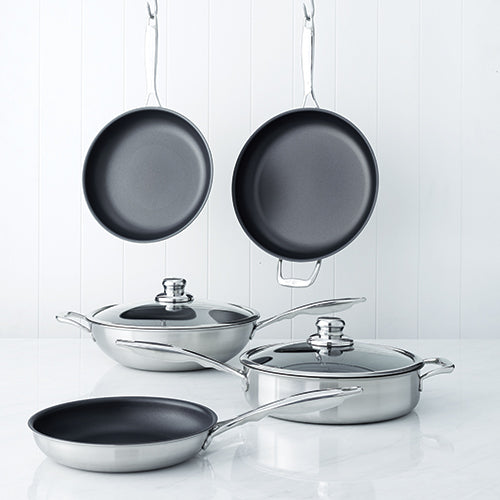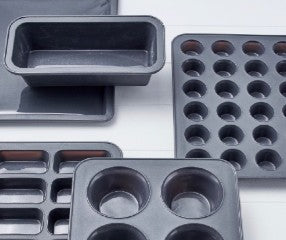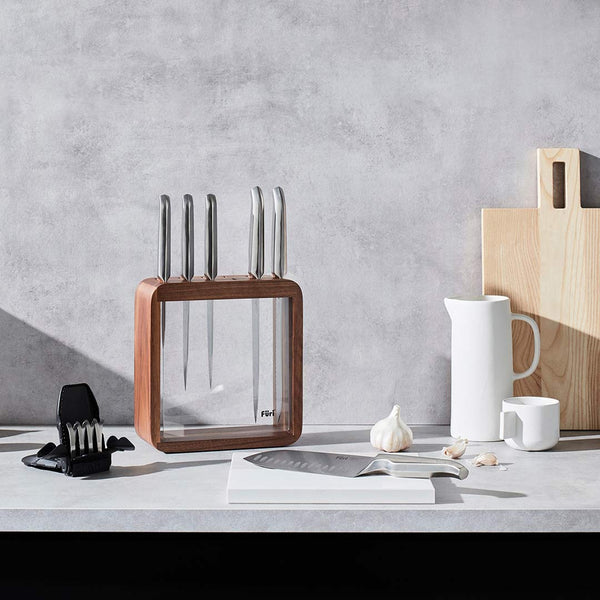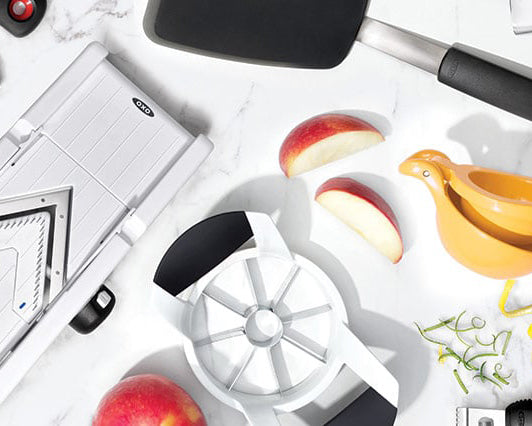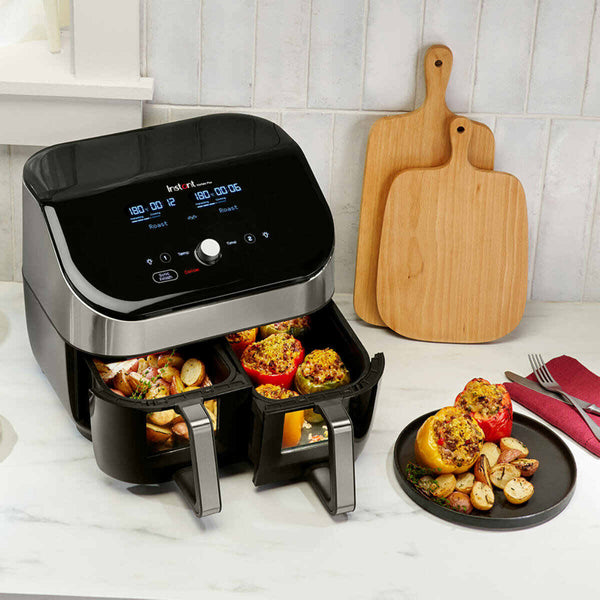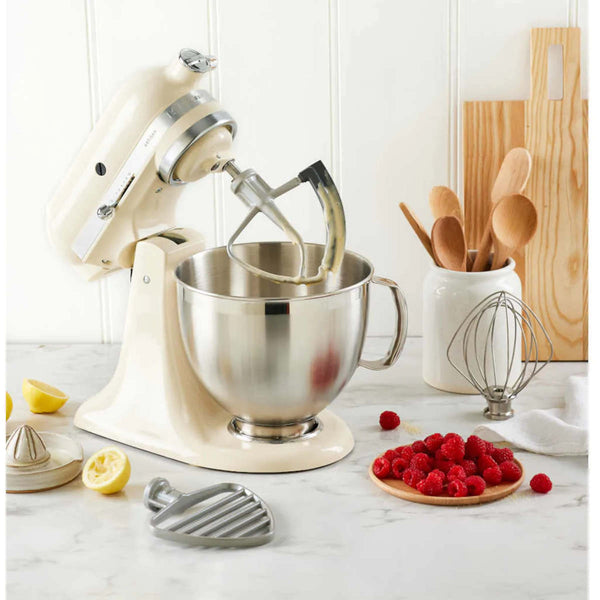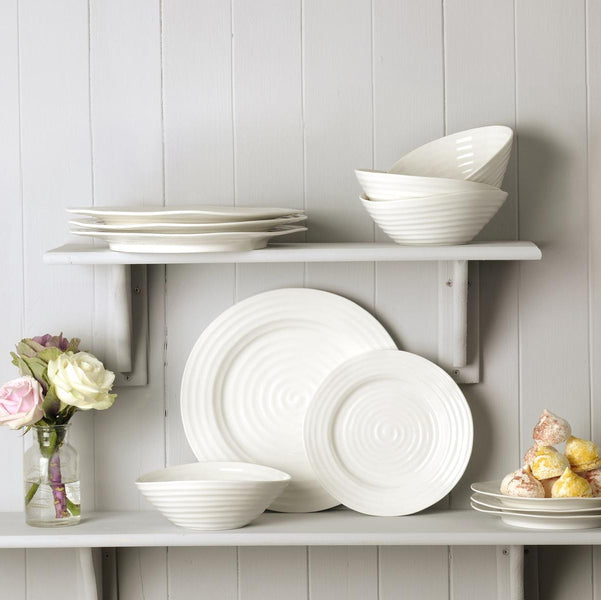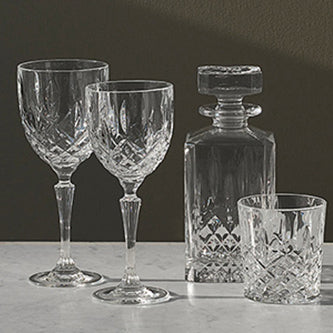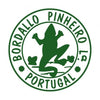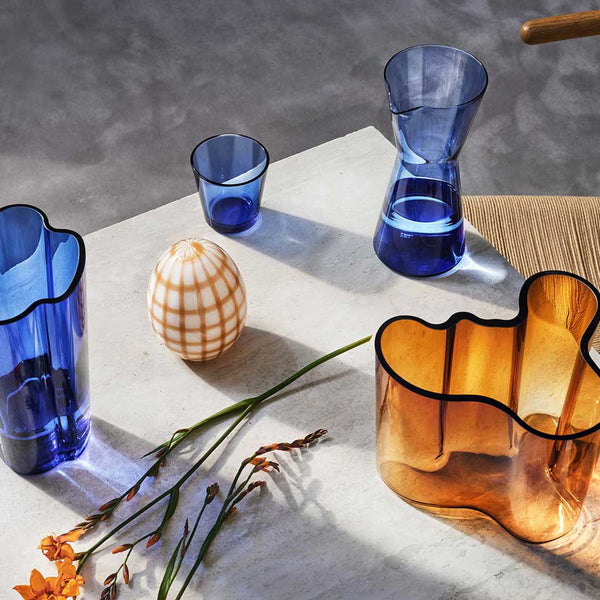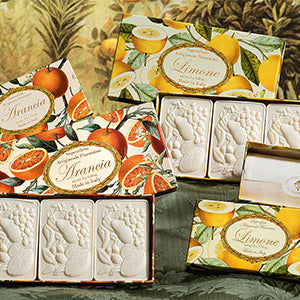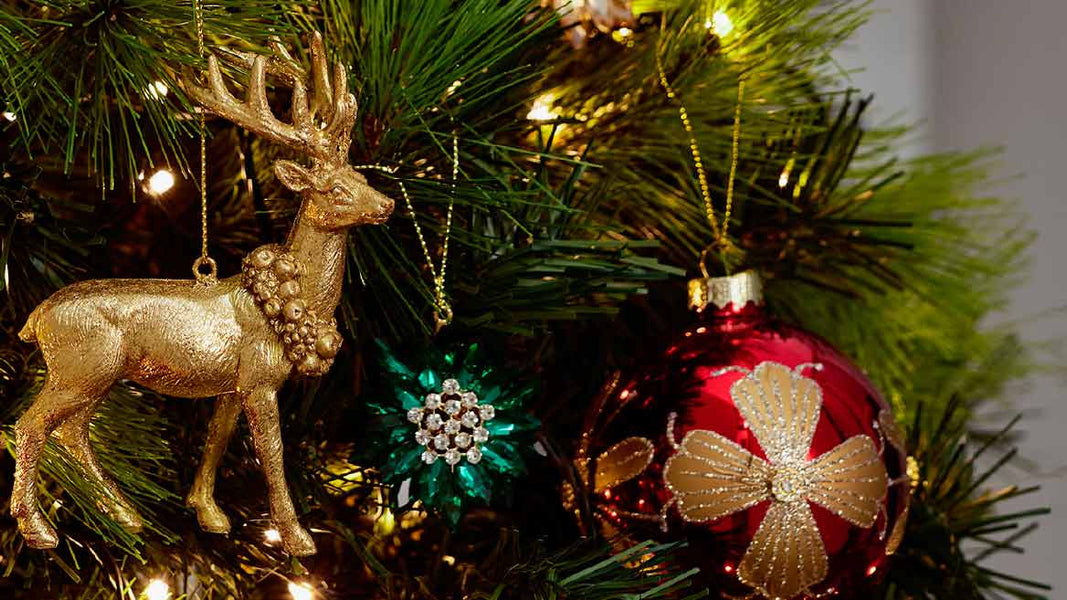
In the vast world of cookware, few pieces have captivated chefs and home cooks alike, quite like the Dutch oven. But what exactly is a Dutch Oven? Well, this versatile kitchen marvel, known for its myriad uses, from simmering stews to baking rustic bread, has journeyed through centuries, gracing ancient fires and modern stovetops. Its undeniable benefits make it an indispensable ally in the kitchen, answering whether Dutch ovens are worth it with a resounding yes.
As we delve into the art of Dutch oven cooking, we'll uncover its rich history and explore why it remains a beloved staple in both professional and home kitchens. For those seeking the epitome of quality and elegance, our range of Dutch ovens offers a blend of tradition and modernity, ensuring every culinary creation is a masterpiece.
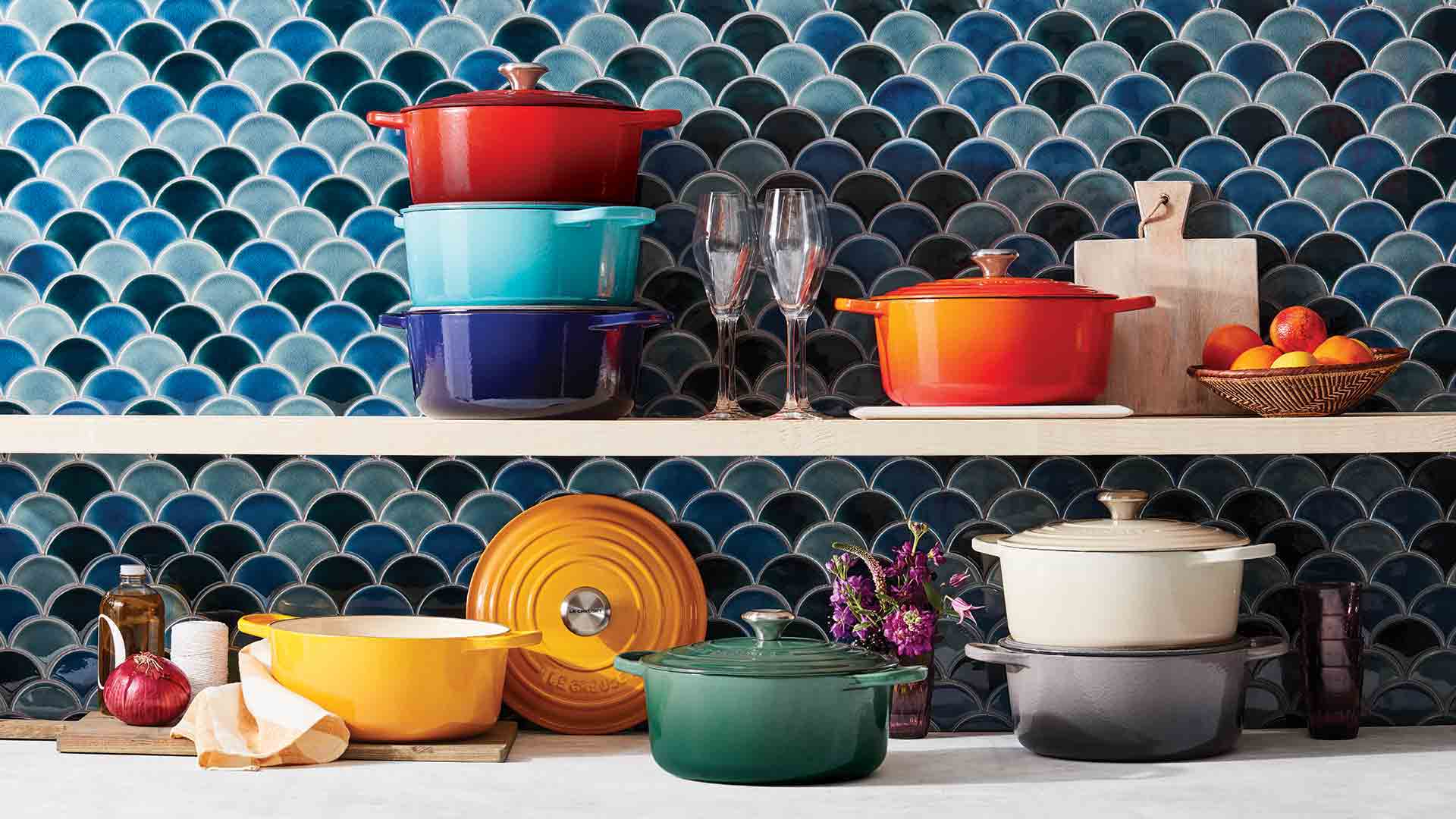
What is a Dutch Oven?
In some cultures, the Dutch oven is a thick-walled cooking pot with a tight-fitting lid, often called a casserole dish. Traditionally made of cast iron, it's known for its ability to retain and distribute heat evenly, making it ideal for slow-cooking dishes. But the history and name of this cookware piece are as intriguing as its culinary uses.
The term "Dutch oven" dates back to the early 1700s. An Englishman named Abraham Darby travelled to the Netherlands to observe how the Dutch were casting their cookware. Inspired by their techniques, Darby returned to England and patented a casting method that improved the Dutch process. He began producing cast iron cookware using this method, and the term "Dutch oven" was coined, paying homage to the original Dutch casting techniques.
Over the years, the design and functionality of the Dutch oven have evolved, becoming a staple in modern kitchens.
Modern Dutch ovens come in two primary types: bare cast iron and enamelled cast iron. While the former requires seasoning to maintain its non-stick properties and prevent rusting, the latter, with its glossy enamel finish, combines the heat retention properties of cast iron with a non-reactive surface that doesn't require seasoning.
Minimax offers a curated collection of Dutch ovens for those passionate about their kitchenware. Each piece is crafted with the utmost attention to quality and material, ensuring you elevate your cooking experience. Whether you're a novice cook or a seasoned chef, understanding the nuances of this versatile pot can transform your culinary endeavours.
Difference Between Dutch and French Ovens
While often used interchangeably, Dutch ovens and French ovens have subtle distinctions:
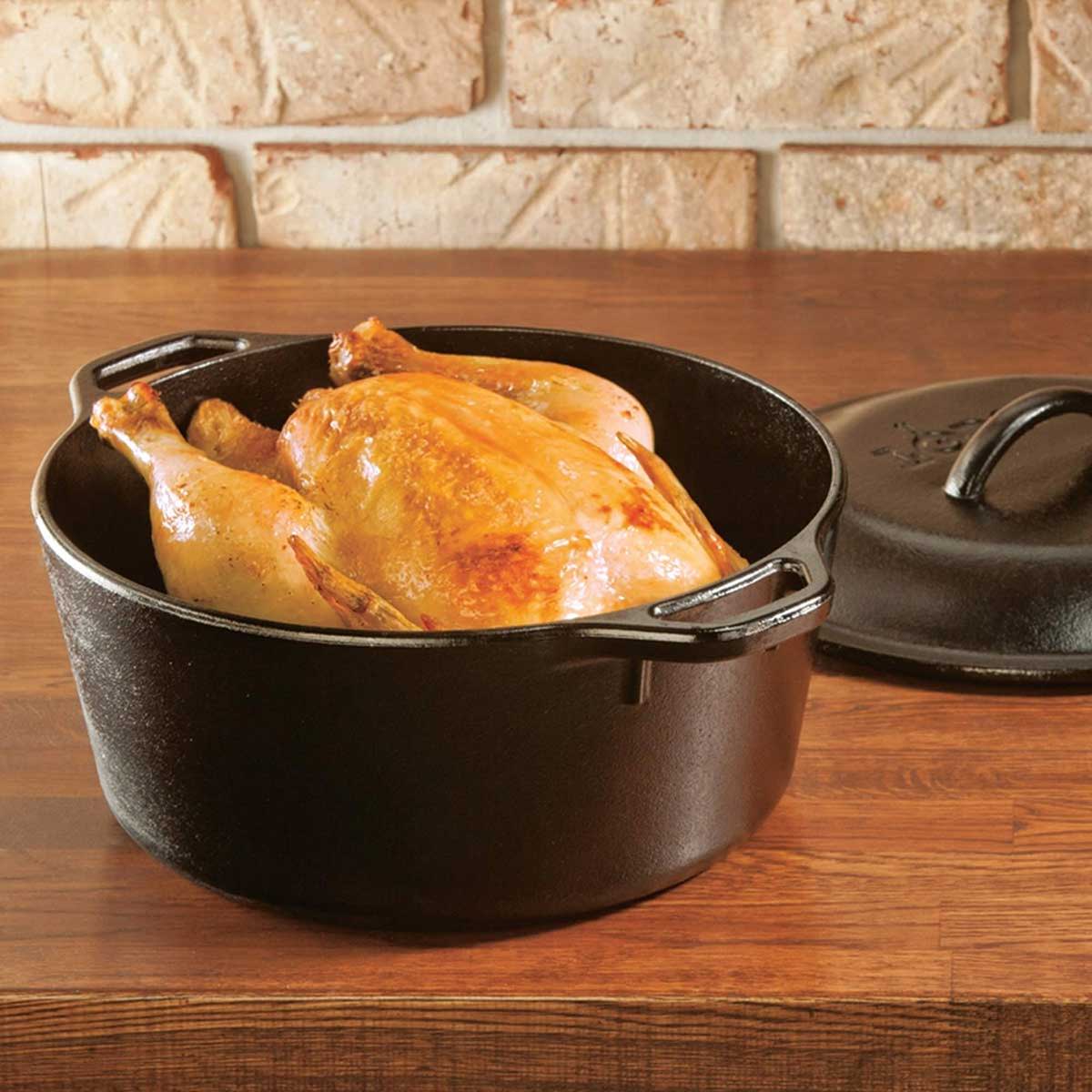
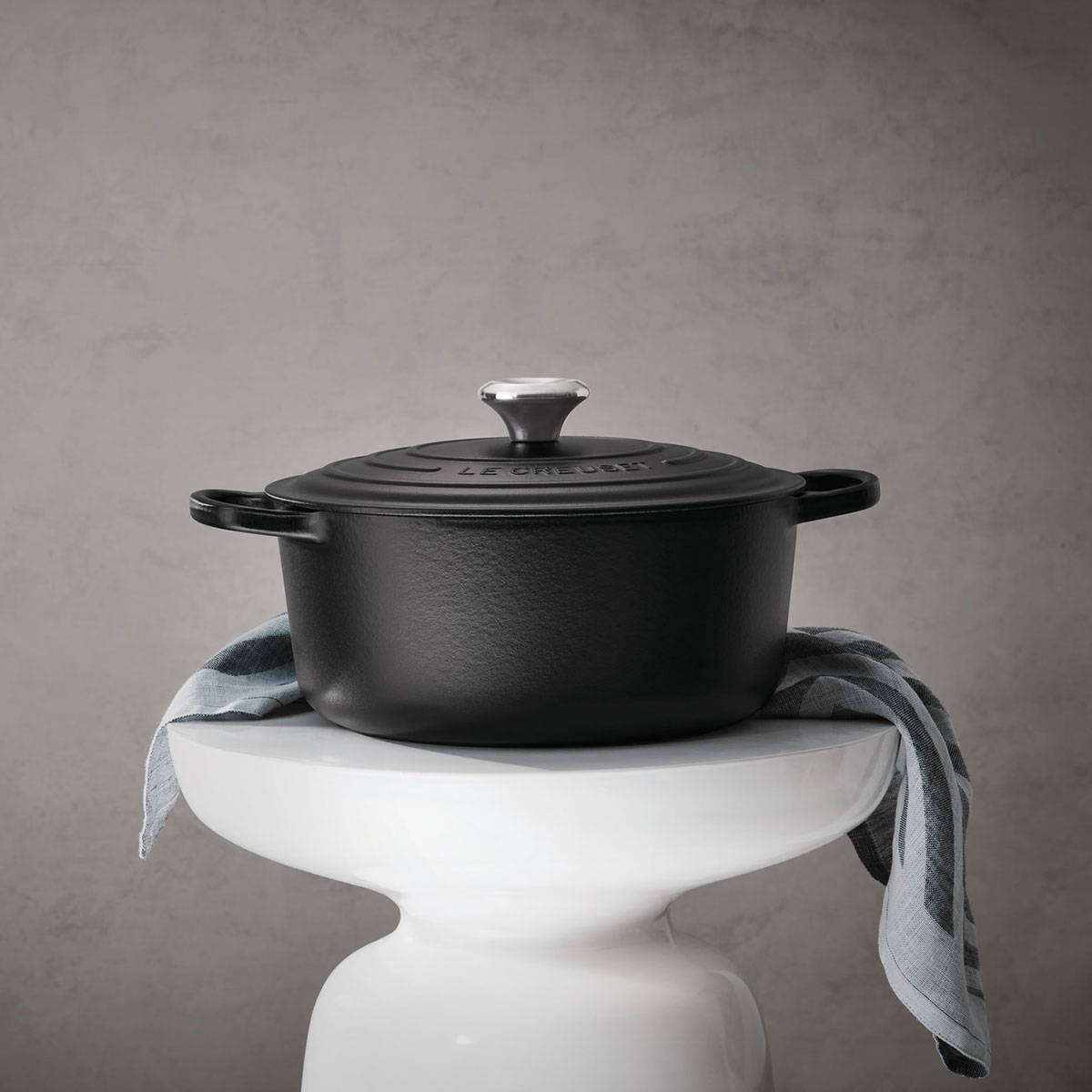
- Origin: "Dutch oven" traces back to a casting technique from the Netherlands, while "French oven" or 'cocotte' is linked to French brands like Le Creuset.
- Coating: Dutch ovens can be bare cast iron or enamel-coated. French ovens are always enamel-coated, offering a non-reactive surface and eliminating the need for seasoning.
- Lid Design: Traditional Dutch oven lids may have a lip for holding coals, while French oven lids are domed and fit snugly to retain moisture.
- Price: Bare cast iron Dutch ovens are generally more affordable, whereas French ovens, associated with high-end brands, tend to be pricier.
In everyday cooking, the functional differences are minimal, with the choice often boiling down to aesthetics, brand preference, and budget.
Dutch Oven Benefits
A Dutch oven is more than just a stylish addition to your kitchen; it's a culinary powerhouse. Its longevity also makes it an eco-friendly choice, reducing the need for frequent replacements and leading to less waste. Here's why many chefs and home cooks alike swear by it:
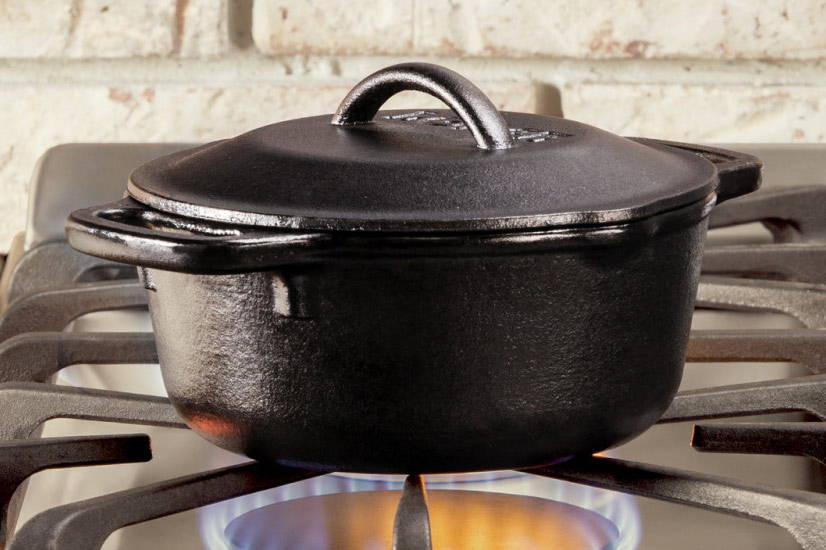
- Even Heat Distribution: Cast iron, the primary material of Dutch ovens, is renowned for its heat retention and even distribution. This ensures that food cooks uniformly, eliminating the risk of hotspots.
- Versatility: From stovetop to oven, a Dutch oven can handle a variety of cooking methods. Whether braising meat, simmering stews, or even baking bread, this pot is a top choice for your next delicious meal.
- Energy Efficiency: Given its heat retention capabilities, you can reduce the heat early in your cooking process, and the Dutch oven will continue to cook the food, saving energy.
- Flavour Enhancement: The tight-fitting lid traps moisture, ensuring the food remains juicy and flavoursome. This is especially beneficial for slow-cooked dishes where flavours intensify over time.
- Durability: A well-maintained Dutch oven can last decades, making it a worthwhile investment. Its robust nature means it's resistant to wear and tear, even with regular use.
- Aesthetic Appeal: Especially with enamelled Dutch ovens, the vibrant colours and glossy finish make them functional and a visual treat. It's a pot that can go from the kitchen to the dining table, making for a rustic and appealing presentation.
Materials Used in Dutch Ovens: Pros and Cons
The material of a Dutch oven greatly influences its cooking performance and maintenance needs. Let's delve into the most common materials and understand their unique properties.
Cast Iron
Pros:
- Heat Retention: Cast iron retains heat exceptionally well, ensuring even cooking and maintaining temperature long after the heat source is turned off.
- Durability: With proper care, cast iron can last for generations, making it a one-time investment for many.
- Natural Non-stick: Over time and with proper seasoning, cast iron develops a natural non-stick surface.
Cons:
- Weight: Cast iron is heavy, which makes handling and storage challenging.
- Maintenance: It requires regular seasoning to maintain its non-stick properties and prevent rust.
- Reactivity: Acidic foods can react with uncoated cast iron, potentially altering the flavour of the dish.
Enameled Cast Iron
Pros:
- Non-reactive: The enamel coating ensures you can cook acidic foods without reactions.
- Easy Maintenance: Unlike bare cast iron, enamelled versions don't require seasoning and are easier to clean.
- Aesthetic Appeal: Available in various vibrant colours, enamelled Dutch ovens can double as kitchen decor.
- No Rusting: The enamel coating prevents the iron from rusting.
Cons:
- Chipping: The enamel might chip over time if subjected to hard knocks or dropped.
- Price: Enameled cast iron tends to be more expensive than its uncoated counterpart.
Ceramic
Pros:
- Heat Distribution: Ceramic distributes heat evenly, ensuring consistent cooking.
- Non-reactive: Like enamelled cast iron, ceramic is non-reactive, making it safe for cooking acidic foods.
- Aesthetic Variety: Available in various designs and colours, ceramic Dutch ovens can be quite decorative.
Cons:
- Fragility: Ceramics can crack or break if dropped or exposed to rapid temperature changes.
- Weight: While lighter than cast iron, ceramic is still relatively heavy.
Best European Dutch Oven Brands
Europe has long been a hub for culinary excellence, extending to its kitchenware. Renowned for their craftsmanship and quality, European brands have set the gold standard for Dutch ovens.
Here are some of the top contenders from the continent:
Le Creuset
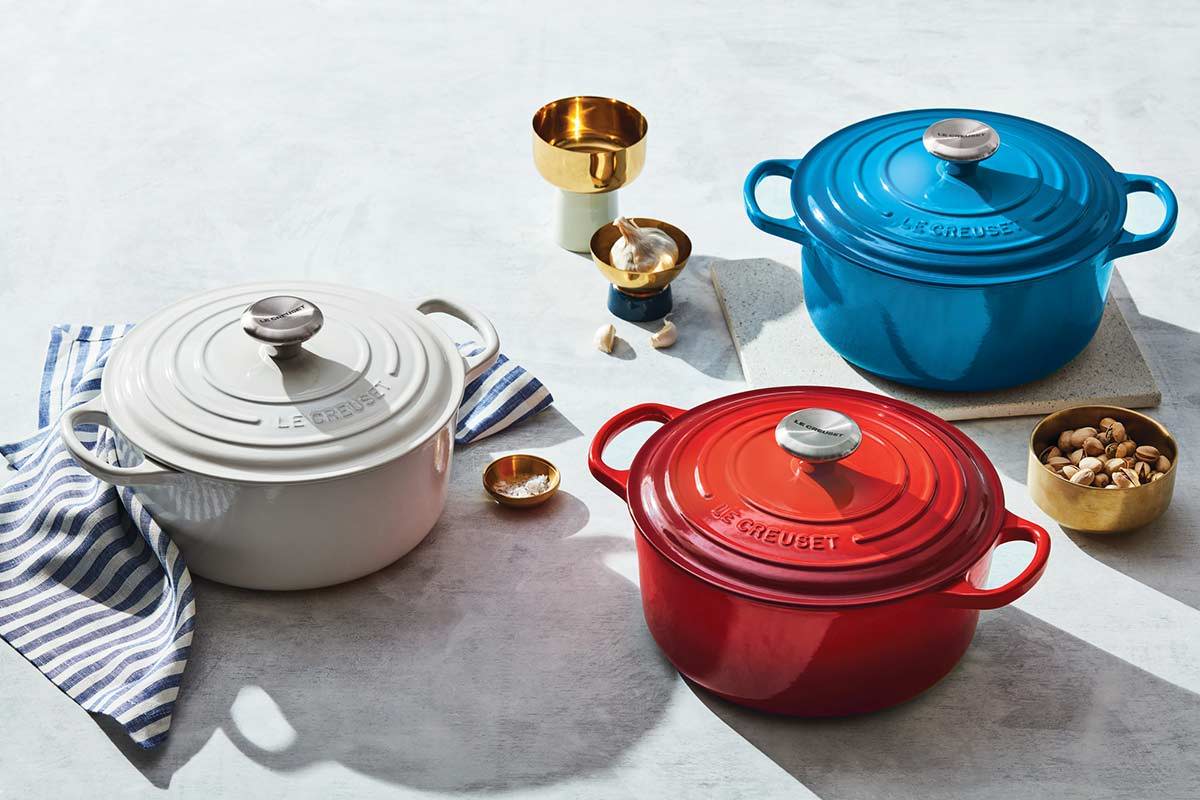
Chasseur
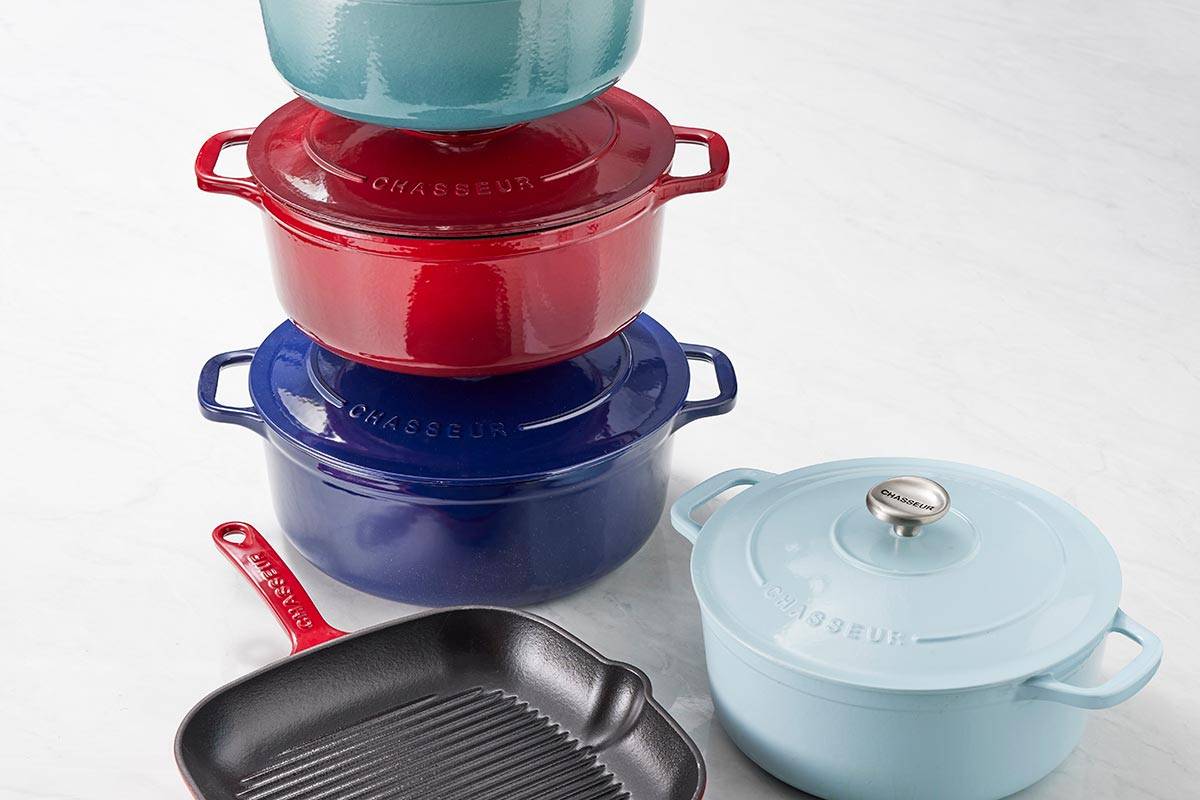
Staub
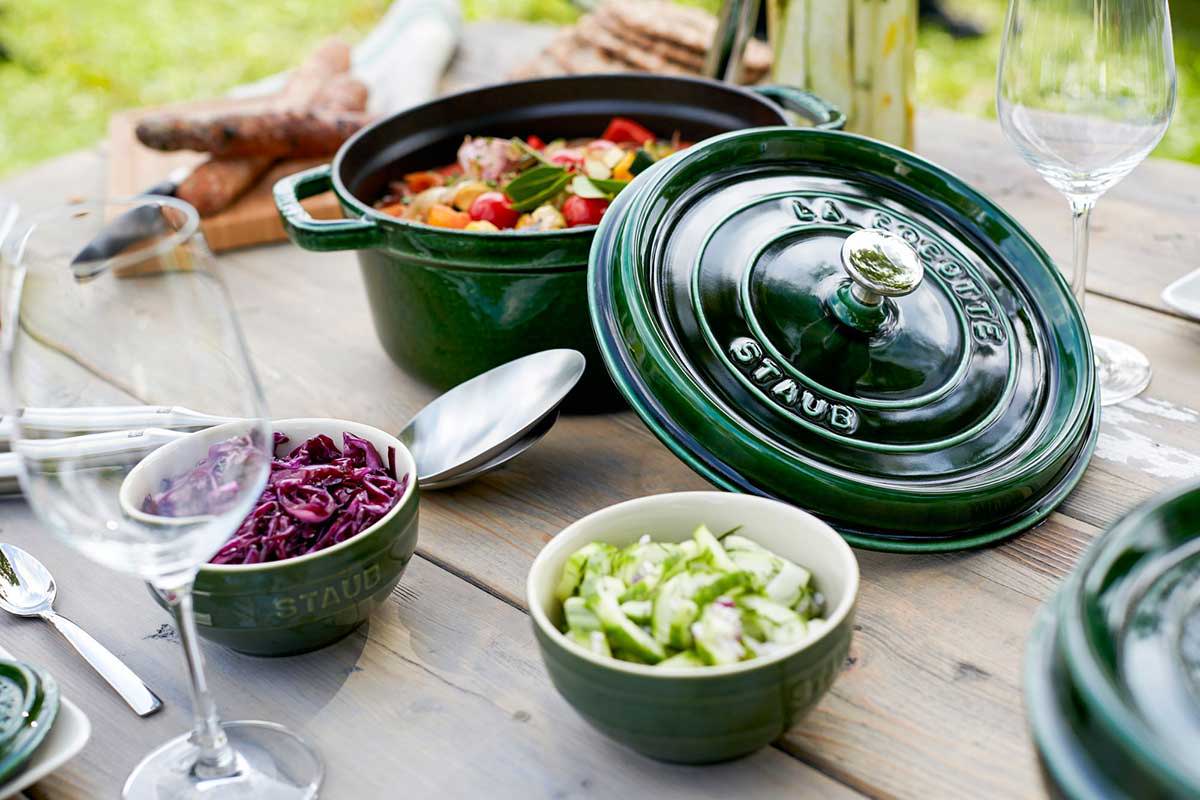
Mastering Dutch Oven Cooking Techniques
Bargain prices sure are tempting. However, the actual value of cookware is often reflected in its price and the reputation of the cookware brand. Investing in quality not only ensures longevity but also enhances your cooking experience. Moreover, consider the long-term savings: a high-quality set might have a higher upfront cost, but if it lasts longer and cooks better, it can save you money and frustration in the long run.
Braising
- Sear your meat or vegetables on the stovetop in the Dutch oven.
- Add a small amount of broth or wine.
- Cover and transfer to a preheated oven, allowing the ingredients to cook slowly and absorb the flavours.
Stewing
Stewing is similar to braising but uses more liquid. It's ideal for making soups or dishes with tenderised meat.
- Brown your ingredients on the stovetop.
- Add your choice of liquid, covering the ingredients.
- Let it simmer on the stovetop or in the oven until the ingredients are tender, and flavours melded.
Baking
Yes, you can bake in a Dutch oven! It's especially popular for bread due to the oven's ability to create a steamy environment, ensuring a crispy crust.
- Preheat your Dutch oven to your regular oven.
- Carefully place your dough inside, using parchment paper to prevent sticking.
- Cover and bake. Remove the lid towards the end for a golden crust.
Frying
The Dutch oven's depth and heat retention make it suitable for deep frying.
- Fill with your choice of oil no more than halfway.
- Heat the oil to the desired temperature.
- Carefully add your food items, ensuring not to overcrowd.
- Fry until golden, then remove and place on a paper towel to drain excess oil.
Roasting
Perfect for larger cuts of meat or whole poultry, roasting in a Dutch oven ensures even cooking and juicy results.
- Preheat your oven.
- Season your meat or poultry and place it in the Dutch oven.
- Add any desired herbs, vegetables, or broth.
- Cover and roast in the oven, occasionally basting if desired.
Slow Cooking
While many turn to electronic slow cookers, a Dutch oven can achieve the same results with more attention.
- Prepare your ingredients and place them in the Dutch oven.
- Set your stovetop or oven to a low temperature.
- Allow the dish to cook slowly, checking occasionally.
Caring for Your Dutch Oven: Seasoning, Cleaning, and Maintenance
A Dutch oven is an investment in your culinary journey. Proper care is essential to ensure it serves you well for years. This section will guide you through the steps to season, clean, and maintain your Dutch oven, ensuring optimal performance and longevity.
Seasoning Your Dutch Oven
Seasoning is crucial for cast iron Dutch ovens. It creates a natural non-stick layer and protects the iron from rusting.
- Clean thoroughly with mild soap and warm water.
- Dry it thoroughly using a towel or on a low-heat stovetop.
- Apply a thin layer of vegetable oil or shortening to the entire surface, inside and out.
- Place it upside down in an oven at 180°C for an hour. Place a tray or foil below to catch any drips.
- Turn off the oven and let it cool inside.
- Repeat this process occasionally to maintain the seasoning.
Note: Enamelled Dutch ovens do not require seasoning.
Cleaning Your Dutch Oven
Proper cleaning ensures your cookware remains in top condition and free from leftover and unwanted flavours.
- Wait for the Dutch oven to cool down after cooking.
- Use warm water and a soft brush or sponge to clean. Avoid using harsh detergents or metal scouring pads on cast iron.
- Simmer some water for a few minutes for stubborn residues, then scrub.
- Dry thoroughly to prevent rusting. Place cast iron on a low-heat stovetop to ensure all moisture evaporates.
- Store with the lid slightly ajar to allow air circulation.
Maintenance Tips
- Avoid Thermal Shock: Watch out for sudden temperature changes, like moving it from a hot stove to cold water. It can cause cracking.
- Use Wooden or Silicone Utensils: These are gentler on the surface, especially for enamel.
- Re-season When Needed: If your cast iron Dutch oven starts to look dull or food sticks to it, it's time to re-season.
- Store Properly: Store in a dry place to prevent rusting. Place a cloth in between to avoid scratching if stacking with other pots.
The Culinary Charm of the Dutch Oven: A Timeless Treasure
In the vast world of cookware, the Dutch oven stands out as a timeless classic, blending history, functionality, and style. Whether a novice or a seasoned chef, this versatile pot promises to elevate your culinary creations, from slow-cooked stews to freshly baked bread.
Understanding what a Dutch oven is and its myriad uses is the first step in appreciating its value. Its robust construction, whether cast iron or enamelled, is designed to last, becoming a cherished heirloom passed down through generations. But beyond its durability, the Dutch oven's ability to create flavourful, aromatic, and perfectly cooked dishes truly sets it apart.
Caring for your Dutch oven, as with any treasured possession, ensures it remains a reliable kitchen companion. Regular seasoning, gentle cleaning, and mindful maintenance will keep it in prime condition, ready to assist in your next culinary adventure.
As you embark on your cooking journey, remember that the right tools make all the difference. And in cookware, the Dutch oven is undoubtedly a shining star. Many often wonder, "Are Dutch ovens worth it?" The answer is a resounding yes.
Whether you're considering adding one to your kitchen arsenal or simply seeking to maximise its potential, know that with a Dutch oven, every meal becomes a celebration.
For those inspired to explore the world of Dutch ovens further, Minimax offers a curated collection that promises quality, elegance, and unparalleled performance. Dive in and let your culinary dreams take flight.
Dutch Ovens, French Ovens FAQs
What are the primary materials used in Dutch ovens?
Dutch ovens are predominantly crafted from cast iron, either bare or enamelled. Some versions are also made from ceramic, though they are less common due to their fragility and lower heat resistance.
How do Dutch ovens differ from French ovens?
While both are similar in many respects, the primary distinctions lie in their origin, coating, lid design, and price. Dutch ovens can be bare or enamel-coated, whereas French ovens are always enamelled. Additionally, French ovens, often associated with luxury brands like Le Creuset, tend to be pricier.
Why is my Dutch oven food sticking?
Using a bare cast iron Dutch oven might be due to inadequate seasoning or cooking at excessively high temperatures. Regular seasoning and heat modulation can prevent this issue. For enamelled versions, avoid cooking at extremely high temperatures.
How do I maintain the enamel coating on my Dutch oven?
To maintain the enamel's integrity:
- Avoid using metal utensils, which can scratch the surface.
- Don't expose the pot to rapid temperature changes to prevent cracking.
- Clean gently with soft brushes or sponges, and avoid abrasive cleaners.
Can I use my Dutch oven on any heat source?
Dutch ovens are versatile and can be used on gas, electric, induction cooktops, and even in ovens. However, always check the manufacturer's guidelines for specific heat limitations.
Is there a difference in taste when cooking with a bare cast iron vs. an enamelled Dutch oven?
Both types offer excellent heat retention and distribution, ensuring flavoursome dishes. However, bare cast iron can impart a slight iron taste to acidic foods, while enamelled versions are non-reactive and won't alter the food's flavour.
How often should I season my bare cast iron Dutch oven?
Regular seasoning is essential to maintain its non-stick properties and prevent rust. Depending on usage, seasoning every few months is recommended. However, if the pot starts looking dull or food begins to stick, it's time to re-season.
Why are Dutch ovens so heavy?
The weight is attributed to the cast iron construction, which ensures even heat distribution and retention. The thickness of the material contributes to its heft but also its unparalleled cooking performance.
Can I marinate food directly in my enamelled Dutch oven?
Yes, the enamel coating on Dutch ovens is non-reactive, making it safe to marinate acidic foods directly in the pot.
What's the maximum temperature an enamelled Dutch oven can withstand in the oven?
Most enamelled Dutch ovens can safely withstand temperatures up to 230°C. However, always refer to the manufacturer's guidelines for specific temperature limits.
Embracing the charm of Dutch and French ovens can elevate your culinary experiences. Whether simmering, baking, or roasting, these timeless cookware pieces promise unparalleled results, making every meal a gastronomic delight.
